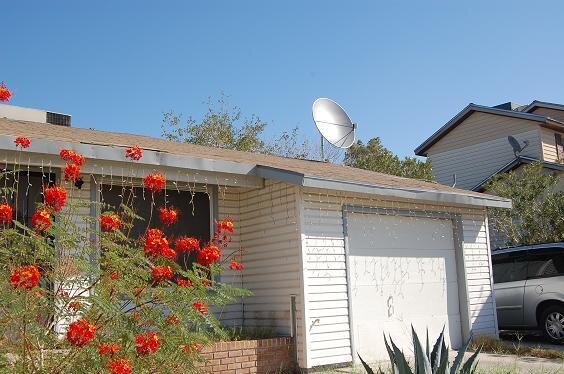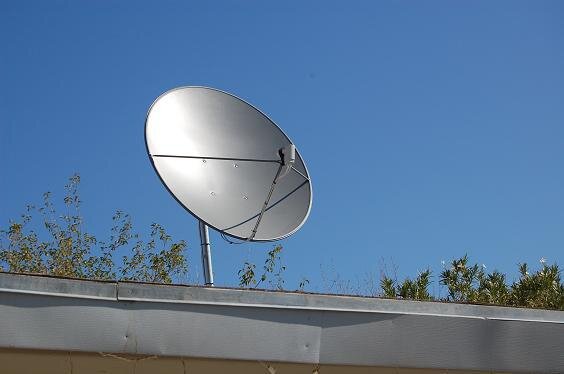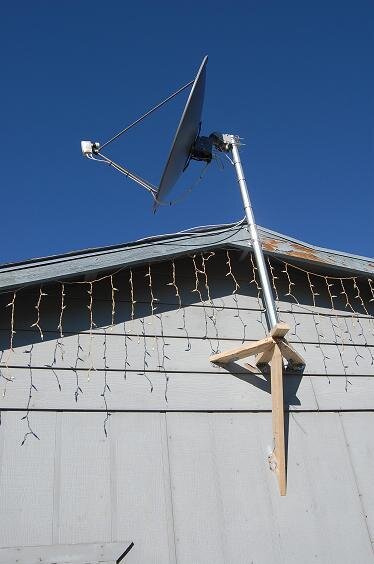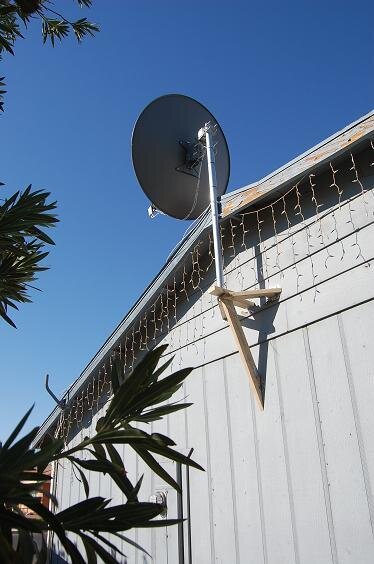The Newbies: Me and son #3 (age 18).
The Counselors: Various senior members of SatelliteGuys.US
Counselors advise, "Get a 36 inch dish, easy to start with, get some FTA up and running for family enjoyment."
Newbies meet with Mom and reason, "They tell us 'rainfade' can occur, and we may be moving to Oregon or Washington. Let's get bigger"
Counselors advise, "Start out simple without motor."
Newbies and Mom decide, "Climbing up to the roof and reinstalling later will mean more suffering in 112 degree Nevada heat. Just install the motor, but don't *run* it until we figure everything else out."
Counselors advise, "Install at ground level first, keep things simple."
Newbies already excited, do not see the post until later. "Let's build a wall mount."
Photos below look like Newbies succeed. Don't be fooled.
Advice to other newbies; DO WHAT SENIOR MEMBERS ADVISE... they don't call them "senior" for nothing!
The Counselors: Various senior members of SatelliteGuys.US
Counselors advise, "Get a 36 inch dish, easy to start with, get some FTA up and running for family enjoyment."
Newbies meet with Mom and reason, "They tell us 'rainfade' can occur, and we may be moving to Oregon or Washington. Let's get bigger"
Counselors advise, "Start out simple without motor."
Newbies and Mom decide, "Climbing up to the roof and reinstalling later will mean more suffering in 112 degree Nevada heat. Just install the motor, but don't *run* it until we figure everything else out."
Counselors advise, "Install at ground level first, keep things simple."
Newbies already excited, do not see the post until later. "Let's build a wall mount."
Photos below look like Newbies succeed. Don't be fooled.
Advice to other newbies; DO WHAT SENIOR MEMBERS ADVISE... they don't call them "senior" for nothing!







